I'm trying to upskill by teaching myself electrical engineering. I already have a degree in theoretical physics and pure mathematics so I don't mind math-heavy answers. While I don't find the maths of the electronics problems I've encountered so far to be too bad, some of the theory is a bit confusing to me.
I'm trying to understand how to calculate the total impedance of a 3-phase overhead transmission line.
I know that usually transmission lines are connected in delta and I know how to calculate the impedance in each phase.
In the particular problem I'm working on we have 7 Ω of resistance from a resistor and 10j Ω from some conductor in each phase.
So using Pythagoras' Theorem on the phasor diagram that means there is \$Z_p={\sqrt {7^2+10^2}}={\sqrt {149}}\$ in each phase.
In polar notation there is \$Z_p= {\sqrt{149}} \angle 55\$ impedance in each phase.
The next bit is where I get confused.
I would have thought to calculate the total impedance, as a delta connection is connected in parallel, we would use:
$$\tfrac{1}{Z_{total}}=\tfrac{1}{Z_1}+\tfrac{1}{Z_2}+\tfrac{1}{Z_3}$$
Where \$Z_1=Z_2=Z_3=Z_p\$ as the delta connection is balanced.
This would give:
$$\tfrac{1}{Z_{total}}=\tfrac{Z_2Z_3+Z_1Z_3+Z_1Z_2}{Z_1Z_2Z_3}=\tfrac{3}{\sqrt{149}} \Rightarrow Z_{total}=\tfrac{\sqrt{149}}{3}$$
Then the polar form of this would be \${\sqrt{149}} \angle 55\$.
$${BUT!!!}$$
according to page 6 of this powerpoint
$$Z_1=Z_2=Z_3=Z_{total}$$
So \$Z_{total}\$ in polar form is just \$Z_p= {\sqrt{149}} \angle 55\$.
Could someone please explain to me why this is?
